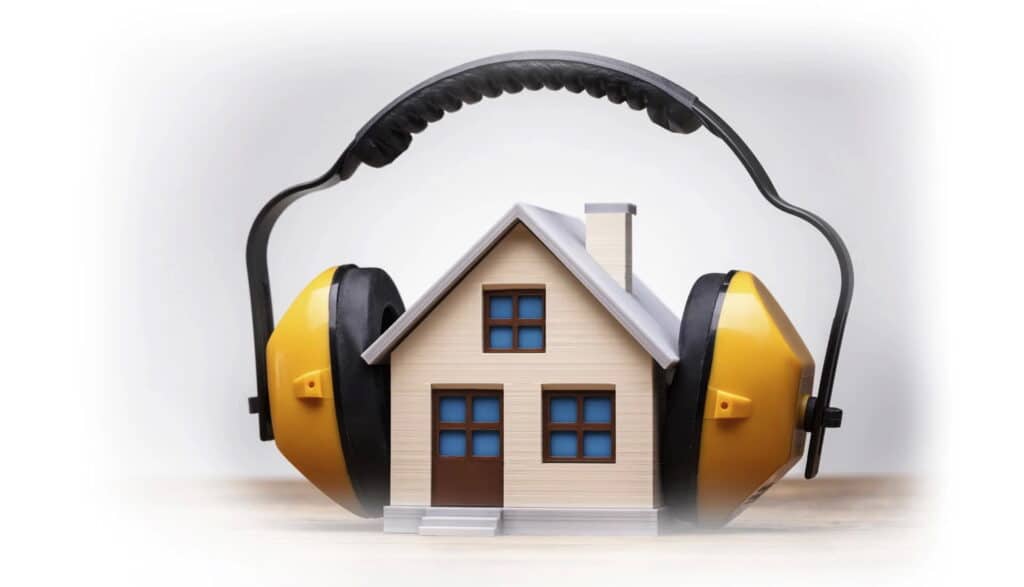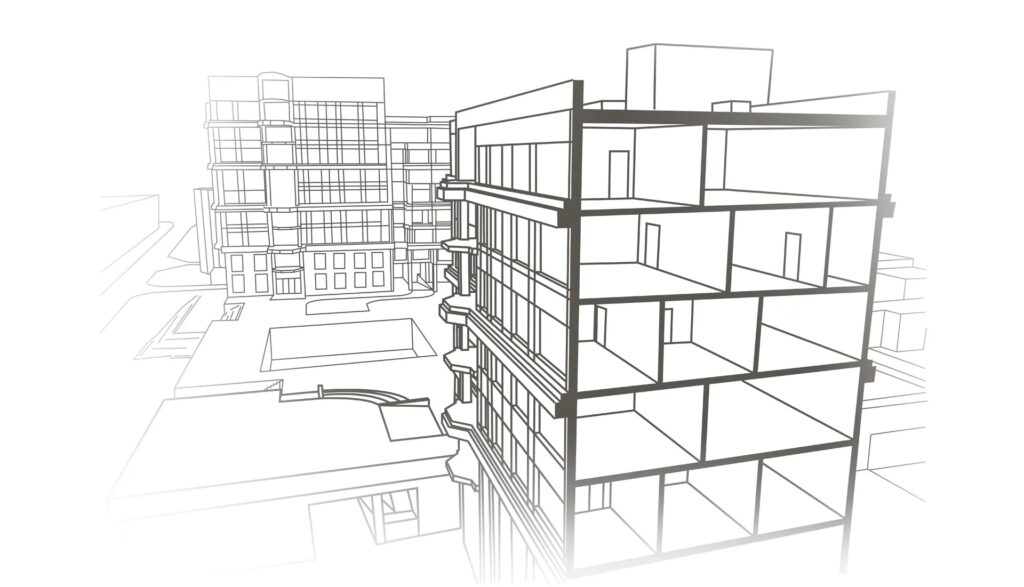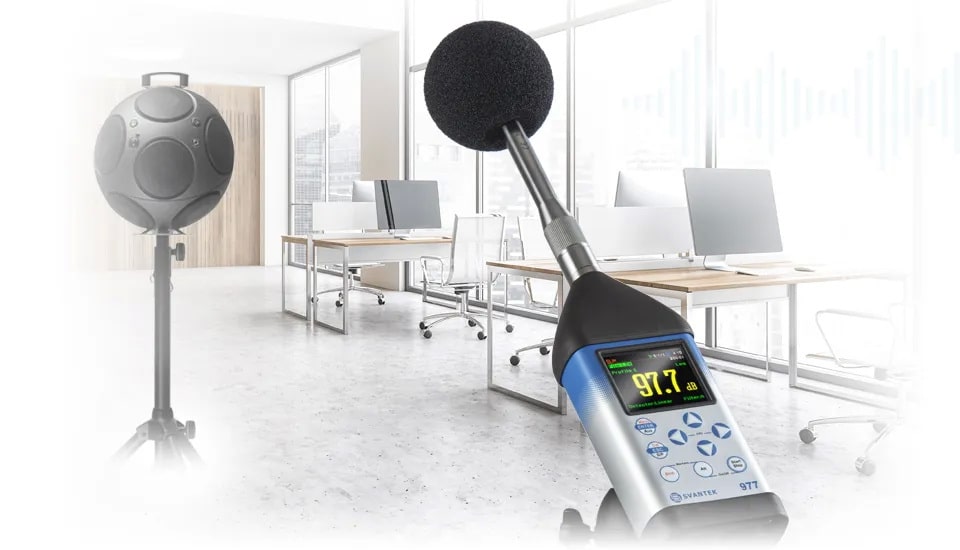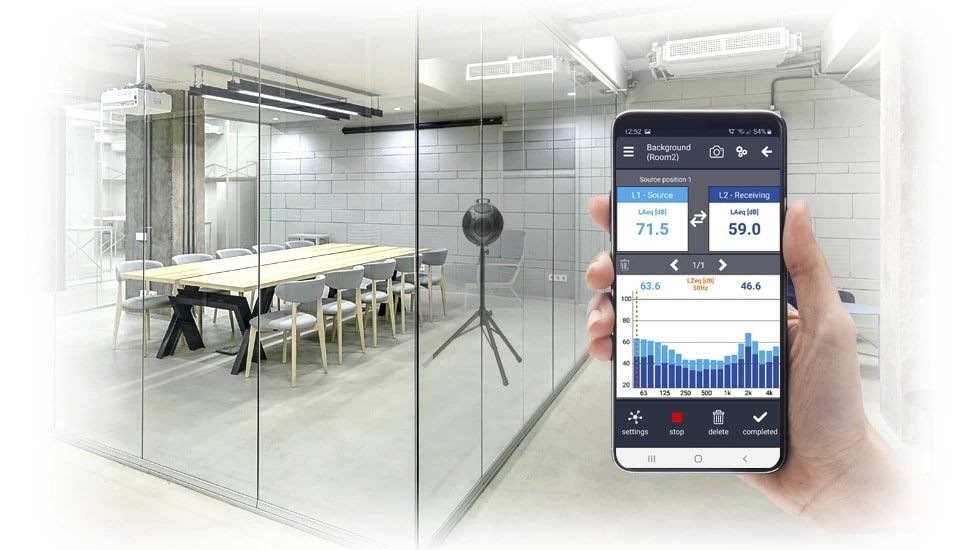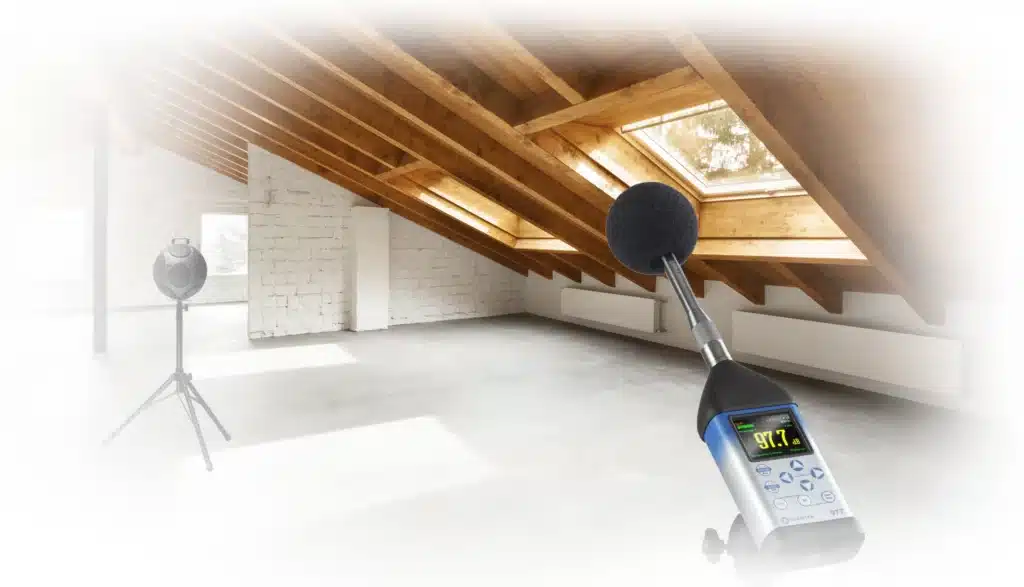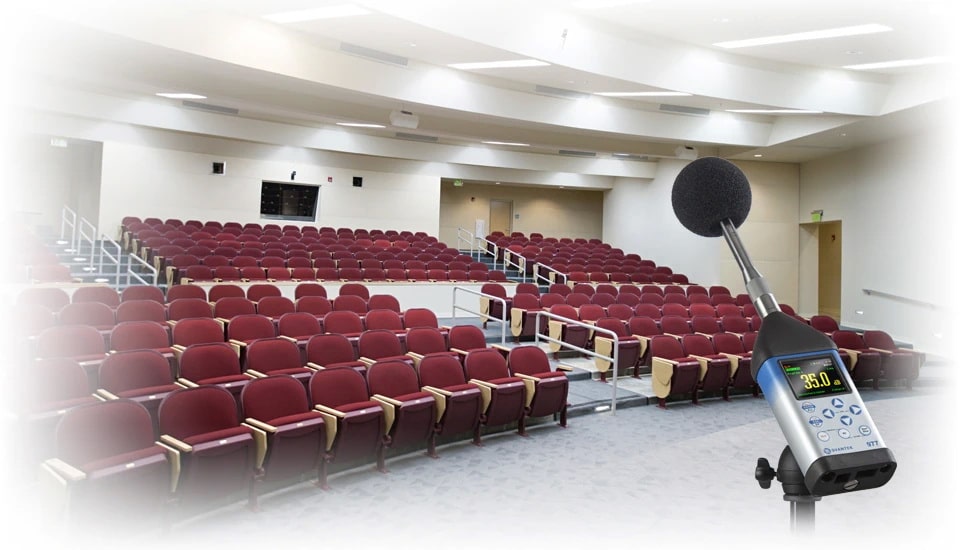What are the BREEAM acoustic certification requirements?
BREEAM certification in the field of acoustics means meeting the appropriate requirements related to the noise level in office spaces, canteens, conference rooms and acoustically sensitive rooms. Additionally, for rooms that are to be fully certified, the sound insulation between acoustically sensitive rooms and other rooms must be measured. The requirements for room parameters are contained in the document Hea 13/Hea 05. Insulation measurements should be performed in accordance with ISO 16283. The levels of the equivalent sound level A LAeq,T should be measured, and these measurements should be performed in already built rooms, but without equipment. The noise assessment should be carried out in accordance with EN ISO 717-1:1996. Measurements should be taken for a period of 8 hours between 9:00 and 17:00, but this is not required if a short, representative period of time can be determined.
What are the guidelines for noise emissions to the environment?
In the BREEAM International 2013 document, in the Pol 5/Pol 8 – Noise Attenuation section, there is information that an assessment of noise emissions to the environment should be carried out for areas sensitive to noise within 800 m of the building under examination. Such areas are primarily residential buildings, hospitals, schools, libraries and places of worship. The difference between the emitted sound level A and the background level should be less than 5 dB during the day and less than 3 dB at night. Daytime is defined as the period of time from 7:00 to 22:00, and nighttime is defined as the period of time from 22:00 to 7:00. In addition, for the purposes of Pol 05/08, it is also necessary to measure noise emissions to the environment in accordance with PN-ISO 1997-1:2006 or in accordance with British standards BS 4142 and BS 7445. If there are no external sound sources within the building, measurements can be omitted. Instead of measurements, the acoustics prepare a document confirming the absence of noise sources.
What are acoustically sensitive rooms?
What are the guidelines for indoor noise measurements?
Background noise measurement guidelines include noise from both internal and external sources. If the windows are to be opened in the room, the measurement should be taken with the windows open. There is no need to include noise from room equipment. The measurement should be performed in at least 4 rooms where we expect the highest noise levels. Measurements shorter than 5 minutes should not be performed, representative results can be obtained already for measurements for about 30 minutes. The insulation should be measured for 4 pairs of rooms most exposed to noise.
How does BREEAM treat rooms used for speech work?
For rooms used for speech work, i.e. where speech intelligibility is important or for music playback, it is necessary to measure the reverberation time. Depending on the volume of the room, the reverberation time for speech should increase from 0.4 s for rooms with a volume of 50 m3, up to 1 s for rooms with a volume of 2000 m3, while the reverberation time for music should be from 1 s to 1.6 s. Lecture halls, recording studios and libraries have their own separate requirements. For the purpose of assessing these rooms, we measure the reverberation time for the middle frequencies. For lecture halls it should be below 0.8 s for small rooms (less than 50 people) and below 1 s for rooms where more than 50 people may be present. Recording studios should have a reverberation time between 0.6 and 1.2 seconds, while listening rooms should have a reverberation time below 0.5 seconds.
What are the background noise levels allowed by BREEAM certification?
The background noise levels in a room, as permitted in BREEAM certification, are most stringent for lecture halls – below 35 dB noise level. Noise below 40 dB should be maintained in general purpose rooms and small office spaces, as well as in meeting rooms. The requirements for such rooms as open spaces, kitchens, restaurants and commercial areas are specified in the range of 40 to 55 dB.
Does the SVANTEK Research Laboratory perform BREEAM certification in the field of acoustics?
In Poland, the SVANTEK Measurements Laboratory prepares projects, measurements and reports for BREEAM certification. Our acousticians meet SQA requirements and have the appropriate experience in measurements for BREEAM certification. Reports prepared for certification purposes are complete and meet all requirements.

